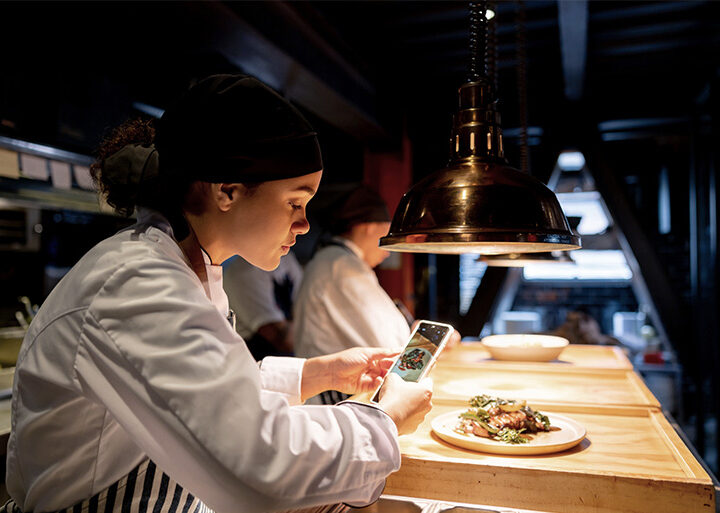The idea of running a food business from home has never been more exciting—or more practical. With the rise of food delivery platforms like Zomato and Swiggy, starting a cloud kitchen from home is now a low-investment, high-potential opportunity.
But while the setup costs are low, success depends on strategy. This guide will walk you through everything you need to know to launch and grow your cloud kitchen from home into a profitable business.
What is a Cloud Kitchen?
A cloud kitchen—also known as a ghost kitchen, dark kitchen, or virtual restaurant—is a delivery-only food business with no dine-in space. You prepare food in your own kitchen (or a rented one) and sell it exclusively through online channels.
For home-based entrepreneurs, this means you can start with minimal overhead costs, focus on cooking great food, and reach customers in your area without investing in a full restaurant.
Step 1: Research Your Hyperlocal Market
Before you start cooking, you need to understand who you’re serving.
- Define Your Delivery Radius: Keep it within 3–5 km for faster delivery and food freshness.
- Identify Your Target Audience: Are they students, working professionals, or families?
- Study Their Food Habits: Look at what’s trending on Zomato, Swiggy, and Instagram in your area.
Pro Tip: Visit nearby restaurants’ online menus to see bestsellers and pricing.
Step 2: Choose the Right Menu for Delivery
When starting from home, you want dishes that:
- Are easy to prepare in bulk
- Travel well without losing quality
- Have high demand in your area
Popular home-based cloud kitchen options include:
- Biryani & Rice Bowls
- Wraps & Rolls
- Regional Specialties
- Comfort Foods like Pasta & Sandwiches
- Health Bowls & Salads
Avoid items that get soggy, spill easily, or require complex plating.
Step 3: Perfect Your Recipes
Your home kitchen is your lab. Run multiple trials to perfect taste, consistency, and portion size.
- Standardize recipes so they taste the same every time.
- Test both small and large batch cooking.
- Experiment with spice levels and presentation.
Remember—your food must impress on the first order to win repeat customers.
Step 4: Get the Right Licenses
Even for a home-based cloud kitchen, you need basic food safety and legal compliance:
- FSSAI Registration: Mandatory for all food businesses in India.
- Shop and Establishment License (if applicable).
- GST Registration (if turnover exceeds the threshold).
This builds credibility and ensures you can list on major delivery platforms.
Step 5: Set Up Packaging & Branding
Your packaging is the first physical touchpoint customers have with your brand.
- Use leak-proof, food-safe containers.
- Add branding stickers or labels.
- Ensure food stays warm and presentable.
Good packaging can turn a one-time order into a loyal customer.
Step 6: Build Your Online Presence
Before you list on Zomato or Swiggy, start building an audience organically:
- Instagram: Share behind-the-scenes content, cooking videos, and customer reviews.
- WhatsApp Groups: Keep in touch with friends, neighbours, and local communities.
- Google Business Profile: Helps local customers find you easily.
Pro Tip: Post raw, real content. People connect with authenticity, not overly polished ads.
Step 7: Do a Soft Launch
Before going public, test your menu with a small audience:
- Distribute free samples to friends, neighbours, and local offices.
- Collect honest feedback.
- Make adjustments based on taste, portion, or packaging.
This step ensures your first paying customers get a flawless experience.
Step 8: Use Hyperlocal Ads to Drive Orders
With a small budget (₹3000–₹5000), you can run Meta Ads targeting people within 5 km of your home.
- Use videos of real customer feedback.
- Highlight USPs like “Home-Cooked,” “Fresh Ingredients,” or “Special Regional Recipes.”
Step 9: List on Zomato & Swiggy
Once you’ve perfected your recipes, packaging, and service, apply to list your cloud kitchen on major delivery platforms.
- Upload high-quality food photos.
- Keep prices competitive for your local market.
- Offer discounts for first-time customers.
Step 10: Retain Customers and Grow
- Build a repeat customer base via WhatsApp marketing.
- Offer loyalty discounts or seasonal specials.
- Keep innovating your menu based on local trends.
A successful cloud kitchen grows not just through new customers but through loyal repeat orders.
Final Thoughts
Starting a cloud kitchen from home is one of the most affordable ways to enter the food business. With the right strategy—understanding your market, perfecting your menu, building an online presence, and delivering consistently—you can grow from a home kitchen to a thriving brand.
The journey takes patience and consistency, but with a customer-first approach, success is within reach.





